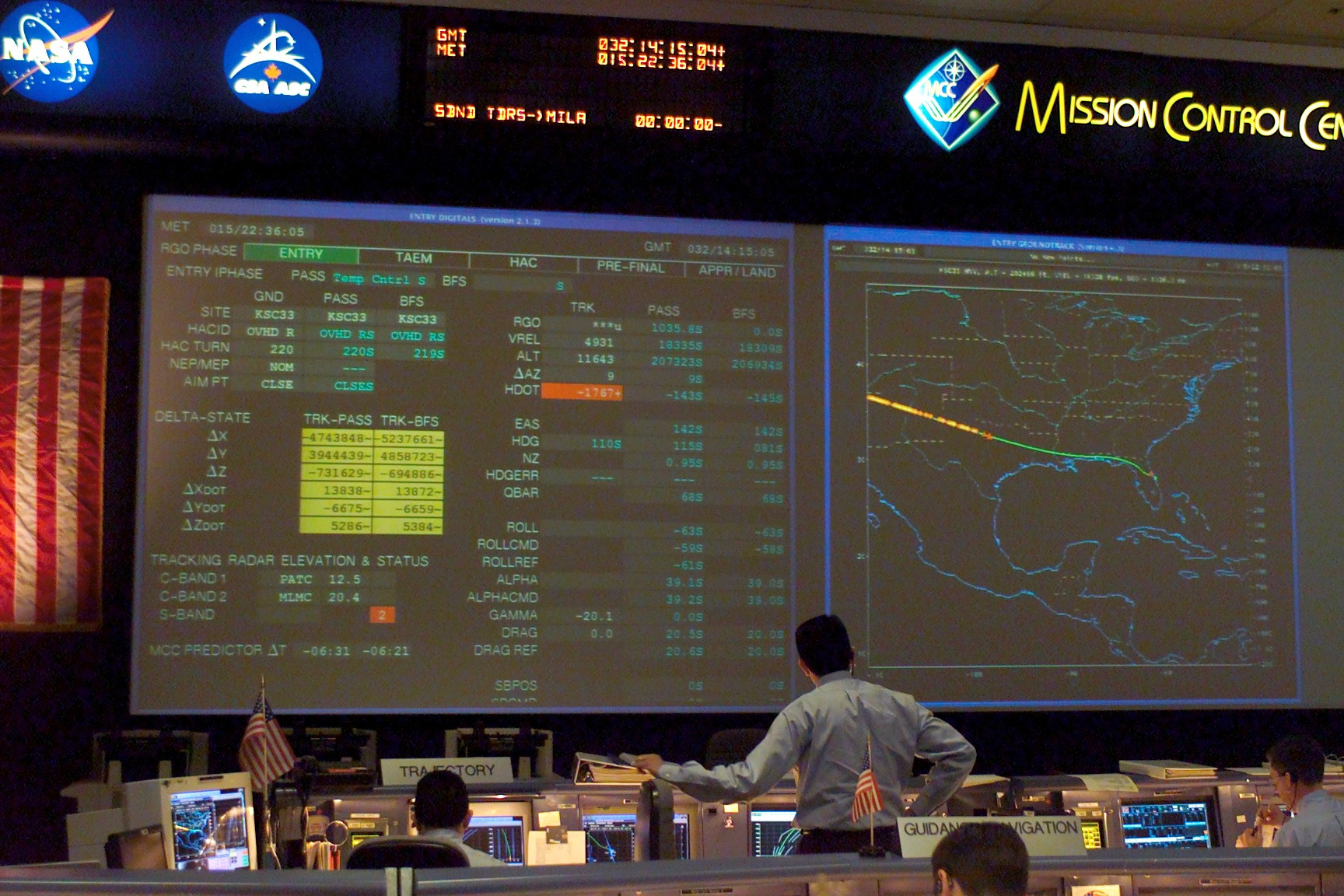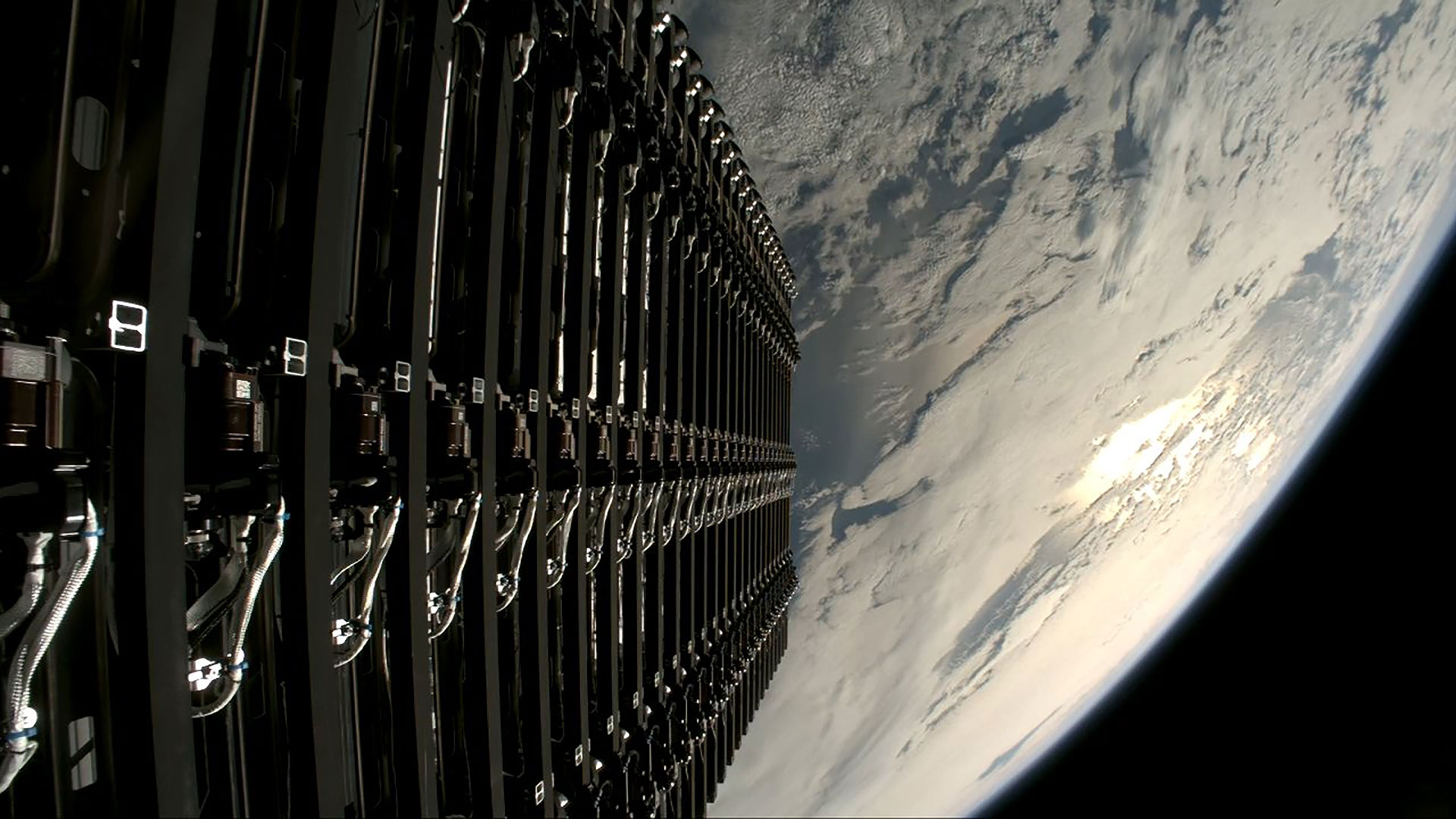New Columbia Accident Time Line Released

(Editor's note: This story was originally published on March 15, 2003.)
HOUSTON - The Columbia Accident Investigation Board (CAIB) issued a new version of a master time line showing the progression of events that led to the destruction of the shuttle and loss of its crew.
On the newly released document, a series of five drop-outs in communication from the space plane are noted prior to the first indication of reentry heating on the space plane.
These "unexpected return link" drop-outs are listed as "out-of-family" based on comparison with an earlier mission heading back to the Kennedy Space Center on the same trajectory.
Early trouble
The new NASA-developed time line called REV 15 Baseline -- shows the space plane in trouble earlier in its dive toward Earth than previously thought.
In one notation, the space plane is listed at an altitude of 227,400 feet, crossing from California into Nevada, speeding at March 22.5. Numbers of pieces of Columbia have been shed by this time. Seconds later, a first bright flash is observed from the ground, followed by a bright piece of debris leaving Columbia.
Breaking space news, the latest updates on rocket launches, skywatching events and more!
The new time line shows that a very faint fragment debris #16 falls from the space plane over New Mexico.
Minutes later, guidance and navigation data available suggests that Columbia was flying in an "uncommanded attitude and exhibiting uncontrolled rates."
Main body break-up
During the last few seconds prior to final loss of signal from Columbia , a number of systems in the left wing of the orbiter were not functioning. Yet other key equipment remained in apparent workinag order.
As example, Auxiliary Power Units that drive control surfaces on the space plane were still running. Communication and navigation aids in the forward fuselage were performing nominally.
It is also noted that the environmental control life support system for the crew was performing nominally, prior to the main body of the vehicle breaking up.
CAIB public hearing
Early next week, March 17-18, the CAIB holds the second public meeting here at a local hotel, outside the gates of the NASA Johnson Space Center.
Tyrone Woodyard, a CAIB spokesman, told SPACE.com that invited experts will discuss in detail the NASA-produced time lines, as well as provide updates on debris recovery and information on aerodynamic and thermal issues related to Columbia's fatal reentry.
Follow SPACE.com on Twitter @Spacedotcom. We're also on Facebook & Google+.

Leonard David is an award-winning space journalist who has been reporting on space activities for more than 50 years. Currently writing as Space.com's Space Insider Columnist among his other projects, Leonard has authored numerous books on space exploration, Mars missions and more, with his latest being "Moon Rush: The New Space Race" published in 2019 by National Geographic. He also wrote "Mars: Our Future on the Red Planet" released in 2016 by National Geographic. Leonard has served as a correspondent for SpaceNews, Scientific American and Aerospace America for the AIAA. He has received many awards, including the first Ordway Award for Sustained Excellence in Spaceflight History in 2015 at the AAS Wernher von Braun Memorial Symposium. You can find out Leonard's latest project at his website and on Twitter.
